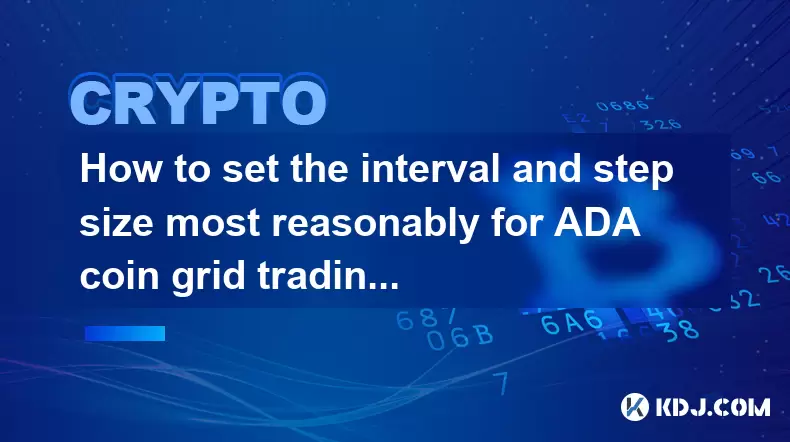-
 Bitcoin
Bitcoin $119600
0.45% -
 Ethereum
Ethereum $4671
8.16% -
 XRP
XRP $3.250
2.78% -
 Tether USDt
Tether USDt $0.9999
0.01% -
 BNB
BNB $838.0
3.17% -
 Solana
Solana $198.5
12.77% -
 USDC
USDC $0.9997
-0.01% -
 Dogecoin
Dogecoin $0.2396
6.18% -
 TRON
TRON $0.3547
2.21% -
 Cardano
Cardano $0.8583
9.20% -
 Chainlink
Chainlink $24.42
13.29% -
 Hyperliquid
Hyperliquid $44.08
1.42% -
 Stellar
Stellar $0.4492
2.37% -
 Sui
Sui $3.915
6.09% -
 Bitcoin Cash
Bitcoin Cash $612.9
3.02% -
 Hedera
Hedera $0.2627
5.34% -
 Ethena USDe
Ethena USDe $1.000
-0.03% -
 Avalanche
Avalanche $24.94
7.83% -
 Litecoin
Litecoin $132.6
10.48% -
 Toncoin
Toncoin $3.439
1.39% -
 UNUS SED LEO
UNUS SED LEO $9.212
2.34% -
 Shiba Inu
Shiba Inu $0.00001371
4.89% -
 Uniswap
Uniswap $11.54
1.13% -
 Polkadot
Polkadot $4.211
7.67% -
 Dai
Dai $0.9998
-0.03% -
 Cronos
Cronos $0.1649
-1.62% -
 Ethena
Ethena $0.7975
-1.46% -
 Pepe
Pepe $0.00001235
9.15% -
 Bitget Token
Bitget Token $4.445
0.46% -
 Aave
Aave $323.7
8.18%
How to set the interval and step size most reasonably for ADA coin grid trading?
For ADA coin grid trading, set interval based on historical data and volatility, and step size according to capital and risk tolerance to maximize profits and minimize risks.
May 19, 2025 at 02:50 pm

Introduction to ADA Coin Grid Trading
Grid trading is a popular strategy among cryptocurrency traders, particularly for assets like ADA (Cardano). This strategy involves placing buy and sell orders at regular intervals within a specific price range. The aim is to profit from the natural volatility of the market by buying low and selling high repeatedly. Setting the interval and step size correctly is crucial to maximize profits and minimize risks. This article will guide you through the process of setting these parameters most reasonably for ADA coin grid trading.
Understanding Grid Trading Parameters
Before delving into the specifics of setting the interval and step size, it's essential to understand what these parameters mean in the context of grid trading.
- Interval: This is the price difference between each grid level. A smaller interval means more grid levels, potentially increasing trading frequency but also increasing transaction costs.
- Step Size: This refers to the amount of cryptocurrency bought or sold at each grid level. A larger step size can lead to higher profits but also increases the risk.
Factors Influencing Interval and Step Size
Several factors should influence your decision on setting the interval and step size for ADA coin grid trading:
- Market Volatility: ADA, like other cryptocurrencies, can be highly volatile. Higher volatility might suggest a wider interval to capture larger price swings, while lower volatility might benefit from a narrower interval to take advantage of smaller price movements.
- Trading Fees: Transaction costs can eat into your profits. Higher trading fees might necessitate a wider interval to reduce the number of trades, while lower fees might allow for a narrower interval.
- Capital: The amount of capital you have to invest will also influence your settings. More capital might allow for a larger step size and potentially higher profits, while less capital might require a smaller step size to manage risk.
Setting the Interval for ADA Coin Grid Trading
To set the interval for ADA coin grid trading, follow these steps:
- Analyze Historical Data: Look at the historical price movements of ADA to determine the average price range over a specific period. For instance, if ADA typically moves between $1.00 and $1.50 over a month, you might consider this range for your grid.
- Choose Your Interval: Based on the historical data, decide on an interval that balances potential profits with transaction costs. If the average price movement is $0.10, you might set your interval at $0.05 to $0.10 to capture these movements.
- Adjust for Volatility: If the market is currently more volatile than usual, you might want to widen your interval to $0.15 to $0.20 to avoid excessive trading.
Setting the Step Size for ADA Coin Grid Trading
Setting the step size involves similar considerations but focuses on the amount of ADA you're willing to buy or sell at each grid level:
- Determine Your Capital: Calculate how much capital you're willing to allocate to your grid trading strategy. If you have $1000 to invest, you might decide to allocate $100 per step.
- Calculate Step Size: Based on your capital allocation, determine the step size in ADA. If the current price of ADA is $1.00, a $100 allocation per step would mean a step size of 100 ADA.
- Adjust for Risk Tolerance: If you're more risk-averse, you might choose a smaller step size, such as 50 ADA per step, to spread your risk across more trades.
Implementing Your Grid Trading Strategy
Once you've set your interval and step size, you can implement your grid trading strategy using a trading platform that supports grid trading. Here's how to set it up:
- Choose a Platform: Select a trading platform that supports grid trading for ADA, such as Binance or KuCoin.
- Set Up Your Grid: Navigate to the grid trading section of the platform and enter your parameters. For example, if you've decided on an interval of $0.10 and a step size of 100 ADA, enter these values into the platform.
- Monitor and Adjust: Keep an eye on your grid trading strategy and be prepared to adjust your interval and step size based on market conditions and performance.
Common Pitfalls and How to Avoid Them
When setting up your grid trading strategy for ADA, be aware of common pitfalls and how to avoid them:
- Overtrading: Setting too narrow an interval can lead to overtrading, increasing transaction costs. Monitor your trades and adjust your interval if necessary.
- Ignoring Market Trends: Grid trading works best in sideways markets. If the market is trending strongly in one direction, your grid might not be effective. Be prepared to pause or adjust your strategy.
- Insufficient Capital: Ensure you have enough capital to cover multiple grid levels. Running out of capital mid-grid can lead to missed opportunities.
Frequently Asked Questions
Q: Can I use the same interval and step size for other cryptocurrencies?
A: While the principles of setting interval and step size are similar across cryptocurrencies, each asset has unique volatility and market conditions. It's best to analyze each cryptocurrency individually and adjust your settings accordingly.
Q: How often should I adjust my grid trading parameters?
A: You should review your grid trading parameters regularly, at least weekly, to ensure they align with current market conditions. Adjustments may be necessary if market volatility changes significantly.
Q: Is grid trading suitable for beginners?
A: Grid trading can be complex and requires a good understanding of market dynamics and risk management. Beginners might find it challenging and should start with smaller amounts and thoroughly research before committing significant capital.
Q: Can I automate grid trading for ADA?
A: Yes, many trading platforms offer automated grid trading features. However, it's essential to monitor your trades and be ready to intervene if market conditions change unexpectedly.
Disclaimer:info@kdj.com
The information provided is not trading advice. kdj.com does not assume any responsibility for any investments made based on the information provided in this article. Cryptocurrencies are highly volatile and it is highly recommended that you invest with caution after thorough research!
If you believe that the content used on this website infringes your copyright, please contact us immediately (info@kdj.com) and we will delete it promptly.
- Meme Coins: Chasing the 2025 Surge – Which Will Moonshot?
- 2025-08-13 10:25:23
- Bitcoin's Wild Ride: Rally, Pullback, and What's Next
- 2025-08-13 10:25:23
- Bitcoin, Bitmax, and Institutional Demand: A New Era of Crypto Investment
- 2025-08-13 10:45:12
- Solana, ROAM, and Airdrops: What's the Buzz in 2025?
- 2025-08-13 11:35:13
- Riding the Crypto Wave: NFTs, DeFi, and the Market's $4.2T High
- 2025-08-13 11:35:13
- Cold Wallet: Cashback, Crypto, and Cutting Gas Fees Like a Boss
- 2025-08-13 11:45:17
Related knowledge

How to purchase Aragon (ANT)?
Aug 09,2025 at 11:56pm
Understanding Aragon (ANT) and Its PurposeAragon (ANT) is a decentralized governance token that powers the Aragon Network, a platform built on the Eth...

Where to trade Band Protocol (BAND)?
Aug 10,2025 at 11:36pm
Understanding the Role of Private Keys in Cryptocurrency WalletsIn the world of cryptocurrency, a private key is one of the most critical components o...

What is the most secure way to buy Ocean Protocol (OCEAN)?
Aug 10,2025 at 01:01pm
Understanding Ocean Protocol (OCEAN) and Its EcosystemOcean Protocol (OCEAN) is a decentralized data exchange platform built on blockchain technology,...

How to invest in Kyber Network Crystal v2 (KNC)?
Aug 12,2025 at 05:21pm
Understanding Kyber Network Crystal v2 (KNC)Kyber Network is a decentralized liquidity hub built on the Ethereum blockchain that enables instant token...

Where can I buy UMA (UMA)?
Aug 07,2025 at 06:42pm
Understanding UMA and Its Role in Decentralized FinanceUMA (Universal Market Access) is an Ethereum-based decentralized finance (DeFi) protocol design...

How to sell my Ren (REN) tokens?
Aug 13,2025 at 11:35am
Understanding REN Tokens and Their Role in Decentralized FinanceREN is an ERC-20 token that powers the Ren protocol, a decentralized interoperability ...

How to purchase Aragon (ANT)?
Aug 09,2025 at 11:56pm
Understanding Aragon (ANT) and Its PurposeAragon (ANT) is a decentralized governance token that powers the Aragon Network, a platform built on the Eth...

Where to trade Band Protocol (BAND)?
Aug 10,2025 at 11:36pm
Understanding the Role of Private Keys in Cryptocurrency WalletsIn the world of cryptocurrency, a private key is one of the most critical components o...

What is the most secure way to buy Ocean Protocol (OCEAN)?
Aug 10,2025 at 01:01pm
Understanding Ocean Protocol (OCEAN) and Its EcosystemOcean Protocol (OCEAN) is a decentralized data exchange platform built on blockchain technology,...

How to invest in Kyber Network Crystal v2 (KNC)?
Aug 12,2025 at 05:21pm
Understanding Kyber Network Crystal v2 (KNC)Kyber Network is a decentralized liquidity hub built on the Ethereum blockchain that enables instant token...

Where can I buy UMA (UMA)?
Aug 07,2025 at 06:42pm
Understanding UMA and Its Role in Decentralized FinanceUMA (Universal Market Access) is an Ethereum-based decentralized finance (DeFi) protocol design...

How to sell my Ren (REN) tokens?
Aug 13,2025 at 11:35am
Understanding REN Tokens and Their Role in Decentralized FinanceREN is an ERC-20 token that powers the Ren protocol, a decentralized interoperability ...
See all articles

























































































